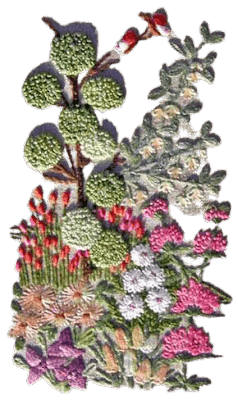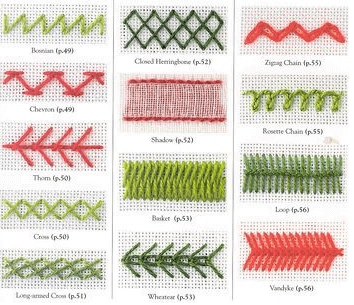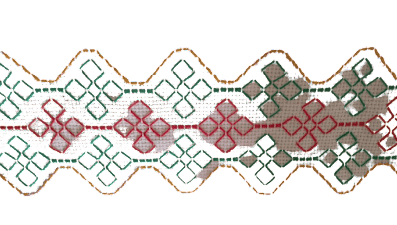Embroidery
Embroidery is a kind of craftwork that is made by using needles and thread of yarn, unlike a sewing machine, embroidery works in a pre-defined pattern. Generally, embroidery uses in the garments industry to increase the decoration of garments products. The type of embroidery usually depends on the work of the yarn. The use of embroidery work can be seen in almost all the countries of the world. Embroidery has been used since ancient times. And those stitches have continued the trend of our core industry. Here this article is about different types of embroidery used in the garments industry:
Some of the notable embroideries used in the garment industry are-
List of Different types of embroidery used in the Garments Industry
- Surface embroidery
- Counted embroidery
- Needlepoint embroidery
- Whitework embroidery
- Cross Stitch embroidery
- Sashiko embroidery
- Hedebo embroidery
- Redwork embroidery
- Candlewick embroidery
- Crewel embroidery
- Hardanger embroidery
- Bluework embroidery
- Drawn thread embroidery
- Pulled thread embroidery
- Goldwork embroidery
- Blackwork embroidery
- Overload embroidery
- Shadow work embroidery
- Eyelet embroidery
- Void work embroidery
- Chicken scratch embroidery
- Huckaback embroidery
Different types of embroidery used in Garments Industry
Surface Embroidery
Surface embroidery is a type of embroidery whose pattern is a kind of decorative stitching and works with thread without fabric on canvas. Its varied forms, styles, different textures, dimensions, images, etc. are added to the canvas to create a variety of simple and complex designs. It has many forms also. Surface embroidery is a very available technique that does not require special fabrics or expensive threads but requires exploration and creativity. Surface embroidery is one of the most popular embroideries in the garments industry.

Counted Embroidery
Counted thread embroidery is a type of embroidery that follows a precise and uniform pattern. There are different types of counted embroidery. In counted embroidery, the fabric threads are counted by the embroiderer before the needle is inserted into the fabrics.
Needlepoint Embroidery
The idea of needlepoint embroider, we get from the ancient Egyptians, who used this kind of stitching in their tent as a canvas. Silk, cotton, wool, different types of fiber, etc. are used for this type of sewing. There are different types of needlepoint canvas available in the market such as mono, interlock, plastic, Penelope, rug’ etc. and their sizes also vary. Currently, this sewing is spreading commercially. Some of the notable stitches used in needlepoint embroidery are brick stitch, Gobelin stitch, mosaic stitch, Parisian stitch, Smyrna stitch, tent stitch, etc.
Whitework Embroidery
Different styles of whitework embroidery have evolved at different times, from different areas. The sewing and foundation fabric colors are the same in whitework embroidery. The term whitework refers to a variety of precise forms that refer to freestyle, counted thread, and canvas work techniques.

Cross Stitch Embroidery
Cross stitch embroidery is a popular type of stitching whose pattern looks like ‘X’. Linen, Aida, and mixed fabrics called ‘evenweave’ are used in cross-stitching. The reason for using ‘evenweave’ is that the term implies that the fabric woven contains the same number of yarns per inch. Cross stitch embroidery is very popular in the garments industry, used very commonly.
Sashiko Embroidery
Sashiko is a traditional Japanese embroidery that is used to enhance the decorative beauty of clothing. The first embroidery was introduced in the Edo era to strengthen the old-fashioned homespun clothes.
Hedebo Embroidery
Hedebo embroidery originated in the Hedebo region of Denmark in the 1760s. At that time hedebo embroidery was used for towels, pillows, men’s shirts, women’s dresses, and farmer’s interiors.
Redwork Embroidery
Redwork embroidery is a form of American embroidery that was especially popular in the 19th century for the use of red thread. As a result, they looked very attractive and were used to decorate household items.
Candlewick Embroidery
Candlewick embroidery is a form of whitework embroidery whose name comes from the nature of soft spun cotton. One of the features of this embroidery is that it embellished various forms of nature. Nowadays it is widely used as a cushion cover.
Crewel Embroidery
Crewel embroidery is made of wool that follows the outline of a particular design. Its use was unique in Britain in the 18th century and it was used in woven linen twill.
Hardanger Embroidery
Hardanger embroidery is a type of whitework embroidery whose origins are not well known. Hardanger embroidery is done with a thread color that matches the fabric. However, contemporary designs also use colorful, varied and overdone threads.
Bluework Embroidery
Bluework embroidery is almost like redwork embroidery, the only difference is the color of thread. Instead of red thread, blue thread is used here. Different designs are usually embossed using blue thread on a white background. In the 1910s, blue work embroidery became very popular.
Drawn Thread Embroidery
Drawn thread is one of the oldest embroideries that was used throughout Europe. Its use can be seen in religious objects and various ornaments. A variety of designs were subtly painted on a white background.
Pulled Thread Embroidery
Pulled thread embroidery is a form of counted thread embroidery. It is also sometimes called drawn thread embroidery. The threads used in this embroidery need to be of good quality and strong enough to withstand strong tension.
Goldwork Embroidery
Goldwork embroidery is the art of embroidery using metallic threads. The term ‘goldwork’ is used because the threads imitate gold, silver, or copper. The same silver and old yarn was widely used in the most expensive tapestry, especially during the renaissance.
Blackwork Embroidery
Blackwork embroidery refers to the work of black yarn. Blackwork on silk yarn over linen was the most common household embroidery technique for household items such as shirts, sleeves, ruffles, caps and cushion covers during the reign of Elizabeth1.
Overlord Embroidery
Overlord embroidery, a descriptive embroidery replica of the Bayeux tapestry created to commemorate the invasion of England from Normandy 900 years ago. It depicts the story of the D-Day landing on 6th June 1944 and the ensuing Battle of Normandy. The story revolves around 34 hand-stitched panels with a total length of 83 meters.
Shadow Work Embroidery
The delicate floral embroidery embellishes one end of a 1920s silk-chiffon scarf, the other end is influenced.
by the poise spring. Fabrics working on a silk glossy cotton floss include distinctive embroidery stitching, shadow work, and pin-stitched appliques.
Eyelet Embroidery
Eyelet embroidery was used to embellish and adorn a variety of projects from Christian gowns to denim jackets.
Void Work Embroidery
Void work embroidery consists of a filled background. Its main component is clearly visible because everything around it ends up being tightly embroidered.
Chicken Scratch Embroidery
A form of chicken scratch embroidered cross-stitch that is traditionally sewn to Gingham fabric using Parle Mercerized cotton thread or stranded embroidery thread. Gingham Squares serve as sewing guides and help to create a lacy pattern.

Huckaback Embroidery
Huckaback embroidery is a type of Swedish weaving. It is a simple embroidery and is embroidered using thread on huckaback fabric.
These are all different types of embroidery used in the garments industry more or less; a decorative process that increases the beauty of a garment product.
